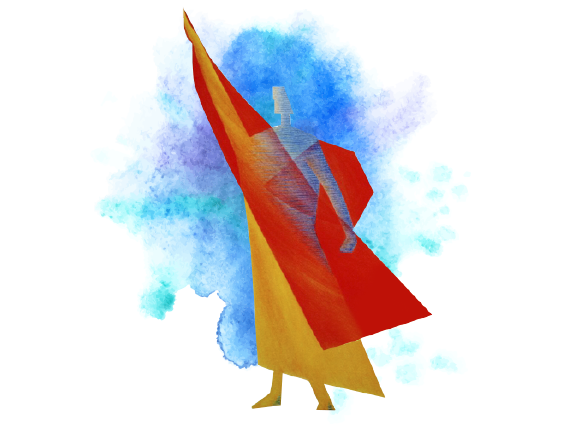Eurythmy – the dance of the soul
ART OF EXPRESSION THROUGH MOVEMENT
Eurythmic gestures and movements attempt to express sounds and speech through body movements. Eurythmy was established in 1912 by Dr Rudolf Steiner. The word ‘eurythmy’ comes from the Greek language, where it means a beautiful or harmonious rhythmic movement. In speech, man expresses his inner state of spirit using words. In eurythmy, man expresses his inner state of spirit using movements. Rudolf Steiner called eurythmy the “visible speech”, where the role of the words is assumed by body movements. Scientifically, it can be established that our body reacts to sounds, both of words and music, with certain subtle movements. In eurythmy, the subtle reaction to or experience of the sound is manifested in a more expressive form of body movements visible to the eye. Each letter and sound has its natural expression in a body movement. Words and tones became visible in their eurythmic interpretation. We can distinguish between the pedagogical, health and artistic eurythmy.
“Eurythmy shapes the human being. As Michelangelo said about setting David free from the stone, thus eurythmy leads us to our humanity, carves us into what we truly are. Art takes the central place between science and spirituality. It is, above all, human, the place where our heart is, and it should reach all people and children. Art is the tenderest and the strongest tool that shapes the most valuable – children”, says Vida Talajić Čuletić, a professor with many years of experience in a Waldorf school, founder of the “Iona” Zagreb Eurythmic Ensemble.


Pedagogical eurythmy
Pedagogical eurythmy is a manner of acting through movements that have a pedagogical value. Certain eurythmic content helps children learn curricular content. The pedagogical eurythmy programme for children is determined by the children’s age. A child can be enrolled in a eurythmy programme for children at the age of four. The pedagogical eurythmy programme is implemented in Waldorf education institutions, from kindergartens to the end of secondary school. Owing to eurythmy, children practise motor skills, concentration, hearing, voice and coordination of movements, speech and thoughts.
It is necessary to emphasize the exceptional value of eurythmy for pre-school children, when the movements, speech and entire behaviour of the child are intensively shaped through the imitation of the movements, speech and behaviours of people in their immediate surroundings. In eurythmy, pre-school children learn by playing cheerfully, participating in a eurythmic play. Through the eurythmic play, children very easily learn speech, even a foreign language. Eurythmy has a special impact on pre-school children because they learn in a manner corresponding to their age, by imitating words and various expressive and quality move of the eurythmist, who guides children like an elf through the world of images from the child imagination in the eurythmic play. In the play, the child becomes “as calm as a mountain, as colourful and fragrant as a flower, flows as fast as a stream, whispers like the wind among trees, buzzes joyfully like a bee, flies freely like a bird”.

Health eurythmy
By shaping specific eurythmic movements, health eurythmy treats certain diseases. For more than 80 years, it has been applied for medical purposes in cooperation with a physician to treat and alleviate ailments. It is most often applied in anthroposophy clinics around the world.
https://www.ivaa.info/
Artistic eurythmy
In artistic eurythmy, eurythmic shows are performed on a stage, while literary works are recited and/or music is played. Eurythmists transform fairy tales, stories, classical music pieces and poetry into motion, which is predetermined by voices and tones. In a eurythmic show, the speech, sound and movement are magically and synergistically overlapped, magnifying the quality and power of the experience of the aural and visual content. After the eurythmic show, audience members are enchanted by the magic of the words, sounds and eurythmic expressions using movements. As a movement artist, the eurythmist uses their body as a musical instrument. They “are not playing” their instrument on the inside. Rather, they are moving it from the inside, “playing” with their inner being. In artistic eurythmy, the human body “becomes sound and speech”.
https://www.euritmija.org/
https://eana.org/
https://www.eur-org.com/home-en
http://www.eusa.eurythmie.net/
Quote: Vesna Peer: “Eurythmy and me”


